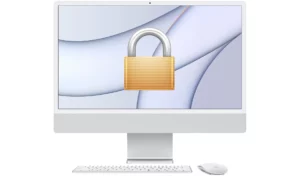Ultimate Privacy Guide For MacOS Users (Hardening) 2025
You can manage the amount of information that is revealed about you and your Mac over the internet thanks to the security protections that are included in macOS. These tools are designed to enhance your privacy.
Make use of Screen Time
Determine whether or not to provide information regarding analytics….
Place a firewall in place.
We Recommend Express VPN as we have tested this Privacy Guide For MacOS and it does its job perfectly. You can take a free trial from the below link only.
Macs are known for their privacy and security, but with the rise of cyber threats, it is essential to take extra steps to protect your information. In this ultimate privacy guide for Mac users, we will cover various tips and tricks to keep your data secure and private.
Ultimate Privacy Guide For Mac Users: macOS Hardening guide

- Use a strong password: Your password is the first line of defense against hackers and cybercriminals. Make sure to use a strong, unique password that is at least 12 characters long and contains a combination of letters, numbers, and symbols. Also, enable two-factor authentication for added security.
- Update your software regularly: Software updates often include security patches and bug fixes, so it’s important to keep your Mac’s operating system and applications up-to-date. To ensure you receive notifications for new updates, go to System Preferences > Software Update and select Automatically Keep My Mac Up-to-Date.
- Enable firewall: Mac’s built-in firewall helps protect your computer from unauthorized access by controlling incoming and outgoing network traffic. To enable it, go to System Preferences > Security & Privacy > Firewall and select Turn On Firewall.
- Use encryption: Encrypting your data makes it unreadable to anyone who doesn’t have the key, so your sensitive information stays private. Macs come with built-in encryption tools like FileVault, which encrypts your entire hard drive. To turn on FileVault, go to System Preferences > Security & Privacy > FileVault and select Turn On FileVault.
- Browse the web securely: When browsing the web, be cautious of the sites you visit and the information you provide. Use a reputable web browser that offers privacy and security features, such as Safari or Chrome. Additionally, use a virtual private network (VPN) to encrypt your online traffic and protect your privacy.
- Remove unnecessary data: Over time, your Mac accumulates a lot of data, including cached files, logs, and backups. This data can put your privacy at risk, so it’s important to remove it regularly. You can use the CleanMyMac X app to scan your Mac and identify files that can be safely deleted.
- Use privacy-focused apps: There are many apps available that are designed with privacy in mind. For example, the Signal app provides end-to-end encryption for your messages, while the 1Password app helps you manage your passwords securely.
- Be wary of phishing attacks: Phishing attacks are a common way for cybercriminals to steal sensitive information. Be suspicious of emails or links from unknown sources, and never enter your password or personal information on a website unless you are sure it is legitimate.
- Backup your data: Regularly backing up your data is crucial in case your Mac is lost, stolen, or damaged. You can use Time Machine to backup your entire Mac to an external hard drive or use a cloud-based service like iCloud or Google Drive.
- Educate yourself: Staying informed about the latest privacy and security threats is key to protecting your information. Read privacy blogs and follow cybersecurity experts to stay up-to-date on the latest trends and best practices.
In conclusion
Protecting your privacy and security on a Mac requires a combination of strong passwords, regular software updates, encryption, and using privacy-focused apps. By following these tips, you can keep your sensitive information secure and ensure your Mac remains a safe and secure place to store your data.
I'm a technology cyber expert and VPN expert. I love to stay up-to-date on the latest tech trends and explore new ways to use technology to improve my life. I also enjoy writing about these topics.
Peace ✌️


